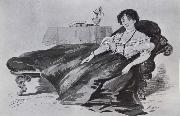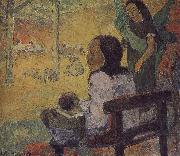Wholesale Oil Painting Reproductions No Minimum and Door to Door! |
|||||||||||
|
|
|||||||||||

|
|||||||||||
|
|
|
||||||||
All Samuel Thomas Gill Oil Paintings |
||||||||
|
|
||||||||
|
|
||||||||
|
Artist Introduction: (Devon, England 1818 - Melbourne 1880 ) Australian/British Artist
Australian/British Artist,also known by his signature S.T.G., was and English-born Australian artist. Gill was born in Perriton, Somerset, England, son of the Reverend Samuel Gill, a Baptist minister, and his first wife, Winifred Oke. Rev. Gill became the headmaster of a school at Plymouth, where the son was first educated, then he continued to Dr Seabrook's Academy, Plymouth. Having moved to London, Gill was employed as a draughtsman and watercolour painter by the Hubard Profile Gallery, before departing for the colony of South Australia in 1839 with his parents, arriving in December. Gill arrived in Adelaide, aged 21 and established a studio in 1840, and called for those 'desirous of obtaining a correct likeness' of themselves and their families, friends, animals and residences to contact him. His activities soon expanded to include street scenes and public events, including the newly discovered copper mines at Burra Burra as well as the departure of Charles Sturt's expedition for the interior on 8 October 1844. |
||||||||
|
|
||||||||
|
Baby Painting ID:: 42112 |
mk167
1867
Watercolour
|
|||||||
Height Width |
INS/CM Quality |
|||||||
|
X |
| |||||||
|
|
||||||||
All Paul Gauguin Oil Paintings |
||||||||
|
|
||||||||
|
|
||||||||
|
Artist Introduction: French
1848-1903
Paul Gauguin Art Locations
(born June 7, 1848, Paris, France ?? died May 8, 1903, Atuona, Hiva Oa, Marquesas Islands, French Polynesia) French painter, sculptor, and printmaker. He spent his childhood in Lima (his mother was a Peruvian Creole). From c. 1872 to 1883 he was a successful stockbroker in Paris. He met Camille Pissarro about 1875, and he exhibited several times with the Impressionists. Disillusioned with bourgeois materialism, in 1886 he moved to Pont-Aven, Brittany, where he became the central figure of a group of artists known as the Pont-Aven school. Gauguin coined the term Synthetism to describe his style during this period, referring to the synthesis of his paintings formal elements with the idea or emotion they conveyed. Late in October 1888 Gauguin traveled to Arles, in the south of France, to stay with Vincent van Gogh. The style of the two men work from this period has been classified as Post-Impressionist because it shows an individual, personal development of Impressionism use of colour, brushstroke, and nontraditional subject matter. Increasingly focused on rejecting the materialism of contemporary culture in favour of a more spiritual, unfettered lifestyle, in 1891 he moved to Tahiti. His works became open protests against materialism. He was an influential innovator; Fauvism owed much to his use of colour, and he inspired Pablo Picasso and the development of Cubism.
|
||||||||
|
|
||||||||
|
|
Baby Painting ID:: 57408 |
mk256 1896 years 66 x 75 cm |
||||||
Height Width |
INS/CM Quality |
|||||||
|
X |
| |||||||
|
|
||||||||
|
Prev Next
|
||||||||
|
|
||||||||
|
Related Paintings to Paul Gauguin :. |
||||||||
|
|
||||||||
|
CONTACT US |


